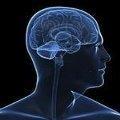Brain Study Sheds Light on Language Use
The medical center at New York University is one of the clinical sites for the study.
Denise Harris, 39, is helping researchers gain a better understanding of the brain. She suffers from epilepsy, and doctors are monitoring her seizures in the hope of performing an operation to minimize them. Her head is bandaged. Wires protruding from the side are attached to electrodes implanted in her brain. Harris says doctors are monitoring her to see whether she is a good candidate for surgery.
"I've been on many medications throughout my life and after a while, they don't work," she said. "I still get seizures. So now, when they remove the part that the seizure is triggered from, it's supposed to stop." But while Harris is in hospital, she is also helping scientists understand how the brain comprehends and uses language. For the study, researchers are monitoring the implanted probes on a part of the frontal lobe called Broca's area, named after 19th century French physician Pierre Paul Broca. He was the first doctor to recognize the major role of that area in language.
Through the implant process, called Intra-cranial Electrophysiology, or ICE, the researchers have found that Broca's area processes three different language functions in succession - within a quarter of a second. It is the first time the technique has been used to document how the brain processes grammar and produces words.
Eric Halgren of the University of California, San Diego, School of Medicine, is one of the principal investigators of the study.
"What we were able to find was that within a centimeter, around less than an inch, certainly, and probably half an inch, there were different regions - perhaps they overlap some - but they were doing, at different times, different processes, all within this small area," he said. The first function deals with recognizing a word, the second with understanding the word's context in a sentence, and the third lets us articulate the word by speaking. Harvard University brain expert Steven Pinker is another of the study's authors. Ned Sahin, a postdoctoral fellow at Harvard and the University of California, San Diego, School of Medicine was the first author of the paper outlining the work, which was published in the journal Science.
According to Sahin, scientists have known for some time that conventional explanations for how parts of the brain work need to be revised.
"Nearly every introductory textbook as well as people practicing in the field in speech pathology, for instance, teach and believe that there is a separation of tasks and a division of labor between two very different parts of the brain - Broca's area [at the front of the brain] and Wernicke's area [further back in the brain and named after 19th century neurologist Carl Wernicke], where Broca's area is responsible for producing, for speaking, and Wernicke's for comprehending," he said. This study shows that Broca's area is involved in both speaking and comprehension, illustrating that parts of the brain perform more than one task. "Here's an example of one relatively small part of the brain that's doing three very different things at three different times, but all within the space of a quarter of a second," he said. But Eric Halgren points out that despite our growing knowledge, much about the human brain remains unknown.
"How does this hunk of flesh, which is not much different from a muscle - it's just a bowl of porridge - how does it produce the mind? It's a total mystery," he said. He says brain studies are shedding light on the pieces of the puzzle and might one day solve the mystery.
Mike O'Sullivan, VOA News in Los Angeles

